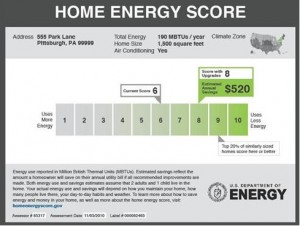Posts Tagged Energy
Deep Analytics Coming to AEC : Data Wants To Be Free. #BIM #XML #AEC
Posted by Jim Foster in BIM, New Technologies on December 16, 2013
 So with Google announcement of Project Genie : Vannevar Technologies and with IBM opening Watson to the programming community one has to believe that deep analytics is coming to the AEC industry. Not silo attempts by industry leaders. It’s got to get easier to run energy analytics, design options, facility management…integrated in a way that is push button easy, and as anyone in the industry can attest we are still far from push button easy. However, getting thousands of people, the collective intelligence of the programming community solving problems. Getting data centralized, performance feedback, learning from that virtuous circle, that is exciting stuff.
So with Google announcement of Project Genie : Vannevar Technologies and with IBM opening Watson to the programming community one has to believe that deep analytics is coming to the AEC industry. Not silo attempts by industry leaders. It’s got to get easier to run energy analytics, design options, facility management…integrated in a way that is push button easy, and as anyone in the industry can attest we are still far from push button easy. However, getting thousands of people, the collective intelligence of the programming community solving problems. Getting data centralized, performance feedback, learning from that virtuous circle, that is exciting stuff.
Data is the foundation of all of this, without the data, we have nothing to run with. For the AEC environment, it’s the building whether it’s in the design phase, or most likely, already operating. How long will the data reside in proprietary formats? How long is that a viable business model? We will see that companies that can provide the most value with the data start to thrive. Hence the opening up of Watson as a platform and the fact that Google is coming to the AEC marketplace shows there is some seismic shifts in store. I’ve written before that getting the AEC crowd to change their stripes, adopt new technologies, can be difficult, however it’s really going to be Autodesk 360, and what they can offer you in house vs. the world. There has been talk of the ICFxml gbXML or ways to have BIMs in an open environment. This may very well be the tipping point.
Building Energy Analysis : A smorgasbord
Posted by Jim Foster in As Builts, Autodesk, BIM, Energy Analysis, Energy Modeling on April 11, 2012
 This is the case the more I learn about it, the less I know. As energy analysis picks up as a real tool in the trades, not just for sustainable retrofits, but to provide the data for financing as well and people working it from combing demographic information with utilities, to engineers, and beyond the amount of tools out there starts to become staggering…and I am sure I will be missing plenty. But half of this excercise is to get input from anyone reading this to what they are using and why. And am encouraging smack talk to why one is better than another. What follows is a completely non-exhaustive list of stuff I’ve been running into and in no particular order. For a more exhaustive list without editorial comments the DOE (Department of Energy) maintains this List.
This is the case the more I learn about it, the less I know. As energy analysis picks up as a real tool in the trades, not just for sustainable retrofits, but to provide the data for financing as well and people working it from combing demographic information with utilities, to engineers, and beyond the amount of tools out there starts to become staggering…and I am sure I will be missing plenty. But half of this excercise is to get input from anyone reading this to what they are using and why. And am encouraging smack talk to why one is better than another. What follows is a completely non-exhaustive list of stuff I’ve been running into and in no particular order. For a more exhaustive list without editorial comments the DOE (Department of Energy) maintains this List.
- EQuest – Straight out of the DOE, and while their website looks like it was designed in 1998, the claim is “Imagine a building energy simulation tool comprehensive enough to be useful to ALL design team members, yet so intuitive ANY design team member could use it” And I know people out there using it.
- BEopt – Straight out of NREL (National Renewable Energy Laboratory) – Now this seems to have some limitations and uses the DOE 2.2 engine, just as eQuest does however, one thing that popped out is the fact that you cannot call out different wall types or change sill heights to windows, which seems very limiting, yet, people are out there using it.
- EnergyPlus : ” is a whole building energy simulation program that engineers, architects, and researchers use to model energy and water use in buildings”
- The Autodesk Family
- Green Building Studio – This a web based service that allows for a variety of analysis including:
- Whole Building Energy Analysis
- Carbon Emissions : Footprint
- Weather Analysis
- Design Alternatives
- Water Usage
- Energy Star Scoring
- GBS uses gbXML and is interoperable with Revit and….yes the DOE 2.2 Engine.
- Ecotect : How this is different than GBS, I don’t know, but if you buy Ecotect you get GBS along with it..but both have similar claims.
- Vasari : More energy analysis but at the design concept stage
- Google : Sketch Up Family
- IES Plug In – Allows you to apply materials onto a Sketch Up model for import into an IES tool
- Energy Plus Open Studio Plug In – All the EnergyPlus option through your SketchUp model
- GreenSpace Modeler : Allows you to apply gbmxl textures to a sketchup model for import into a gbmxl tool for analysis like Green Building Studio
An excellent resource I found through WBDG is the a summary of Energy Analysis Tools, including DOE 2.2, BLAST, EnergyPlus, and the like. Plus there is a whole list of BLCCs (Building Lifecycle Cost) Programs.
I guess the point is just when you think BIM is going to solve everything with a push button, no matter which ecosphere you live in, be it Autodesk, Archicad, etc. there are tool sets out there, and more importantly ‘free’ tool sets out there that get a lot of play. What worksflows and tools are you using for building / energy analysis?
Obama Administration Boosts Retrofits : Biden Announces Fed Program
Posted by Jim Foster in BIM, Built Environment, Sustainable Retrofits on November 12, 2010
 Am I calling it or what? As reported by Martin LaMonica on CNET and the Steven Thomma of the Miami Herald Vice President Joe Biden with US Department of Energy Secretary Steven Chu on Tuesday unveiled a new federal program to make it easier for Americans to make their homes more energy efficient, saying it will help people save money and create new jobs for contractors.
Am I calling it or what? As reported by Martin LaMonica on CNET and the Steven Thomma of the Miami Herald Vice President Joe Biden with US Department of Energy Secretary Steven Chu on Tuesday unveiled a new federal program to make it easier for Americans to make their homes more energy efficient, saying it will help people save money and create new jobs for contractors.Excerpts for the release below:
“The initiatives announced today are putting the Recovery Through Retrofit report’s recommendations into action – giving American families the tools they need to invest in home energy upgrades.” said Vice President Biden. “Together, these programs will grow the home retrofit industry and help middle class families save money and energy.”
“The Home Energy Score will help make energy efficiency easy and accessible to America’s families by providing them with straightforward and reliable information about their homes’ energy performance and specific, cost-effective energy efficiency improvements that will save them money on their monthly energy bills,” said Secretary Chu.
Under this voluntary program, trained and certified contractors will use a standardized assessment tool developed by DOE and Lawrence Berkeley National Laboratory to quickly evaluate a home and generate useful, actionable information for homeowners or prospective homebuyers. With only about 40 inputs required, the Home Energy Scoring Tool lets a contractor evaluate a home’s energy assets, like its heating and cooling systems, insulation levels and more, in generally less than an hour. That means a homeowner can see how their home’s systems score, regardless of whether a particular homeowner takes long or short showers or keeps their thermostat set high or low.
The following states and municipalities are participating in the pilot program: Charlottesville, Virginia; Allegheny County, Pennsylvania; Cape Cod and Martha’s Vineyard, Massachusetts; Minnesota; Omaha and Lincoln, Nebraska; Indiana; Portland, Oregon; South Carolina; Texas; and Eagle County, Colorado. Learn more about each of the testing locations along with details on how to participate in the Home Energy Score program.
Consumers can apply for up to $25,000 in PowerSaver loans through the U.S. Department of Housing and Urban Development, which expects that 24,000 homes will qualify during a two-year pilot program, according to USA Today.
This home energy retrofit program follows a $5 billion weatherization investment that was part of the stimulus package last year. Another effort is Home Star, nicknamed Cash for Caulkers, which would provide rebates to consumers for investing in energy efficiency retrofits.
Read more: http://news.cnet.com/8301-11128_3-20022184-54.html#ixzz155UA7FTa
How does this effect BIM users/developers, etc.?
Commercial deployment will be huge and has more robust documentation and reporting needs, plus these firms getting into it will need to have better tools, etc as the race begins to fill these needs and to differentiate themselves from competition, imagine a 3D BIM model with all the reporting built into it. I have to imagine the plug ins are already under development. Additionally, did you notice the certification needs recommended for this. Strap it on, let’s get back to work.
Energy Audit Army is Well Funded and on the March : Firms Starting and Accelerating like a 16 year Old with Porsche
Posted by Jim Foster in BIM, Energy Analysis, New Technologies on November 1, 2010
 No sooner had I posted on Green BIM, and also flogging the sustainable retrofit business model, that friends and colleagues start bringing up firms specializing in energy audits. Most of these firms combine the audits with consulting to provide sustainability options i.e. savings through energy efficiency. The more you dig you’ll see that energy audits are becoming common place and even mandatory in places. The Green Energy Act passed in Ontario, Canada mandates a seller preform and energy audit on their home. The city Austin now mandates it. You get the picture, regardless if you think it is a good practice, it is also being legislated into existence. Not only that there are rebates and tax credits available for implementing retrofits. Good business. So let me again hammer this home in bullet point format:
No sooner had I posted on Green BIM, and also flogging the sustainable retrofit business model, that friends and colleagues start bringing up firms specializing in energy audits. Most of these firms combine the audits with consulting to provide sustainability options i.e. savings through energy efficiency. The more you dig you’ll see that energy audits are becoming common place and even mandatory in places. The Green Energy Act passed in Ontario, Canada mandates a seller preform and energy audit on their home. The city Austin now mandates it. You get the picture, regardless if you think it is a good practice, it is also being legislated into existence. Not only that there are rebates and tax credits available for implementing retrofits. Good business. So let me again hammer this home in bullet point format:
Give me one or a dozen at that price.
Recurve, ” a San Francisco-based provider of software and services for the home performance industry, today announced that it has secured an $8 million Series B round of financing. New investor Lowe’s Companies, Inc. (NYSE: LOW) joins existing investors RockPort Capital Partners and Shasta Ventures in the financing.” Provides not only the energy audit and recommendations and not wanting to share much pie can do the retrofits themselves as well.
Neststepliving, a Needham, MA announced this summer a “$2.6 million first close of their Series B financing round. The financing was led by local green entrepreneur John McQuillan, President & CEO of Triumvirate Environmental, who was joined by other new investors and returning Series A investors including Black Coral Capital and the Clean Energy Venture Group.”
And these are companies that people just mentioned to me in the last couple of days and as stated on the NextStepLiving website, Most Massachsuetts Homeowners are eligible for free home energy assessment and generous weatherization rebates up to 85% of the cost of the work. Regardless of who’s picking up the tab and maybe it’s just a lead generation tool, but free? Can’t lower the hurdle any more than that, and then coupled with rebates to do the work, well, get on that train.
Retroficiency , based here in Boston , “provides energy audit and energy management software and services.”
Appogee Interactive, Enercom , and Microsoft’s HOHM Beta, are all providing tools for analyzing your home. Why? It leads to business, or as my dad always says, “follow the money”. And the smart money is in sustainable retrofits and energy audits.
Department of Energy (DOE) Launches New Blog : Energy Blog : Yawn? : BIM
Posted by Jim Foster in BIM, Energy Analysis on July 27, 2010
 As reported by Katherine Tweed from GreenTech Media and picked up by Wired the DOE Launched a new blog. (Man, this new media everybody ‘borrowing’ and ‘sharing’ content gets tough to footnote). Alone, generally, this should be met with a collective YAWN. However, as a thread of the whole fabric it adds strength to the perception and reality of the move to a sustainable future and the real investment that is happening around it. And get this from a post on July 23.
As reported by Katherine Tweed from GreenTech Media and picked up by Wired the DOE Launched a new blog. (Man, this new media everybody ‘borrowing’ and ‘sharing’ content gets tough to footnote). Alone, generally, this should be met with a collective YAWN. However, as a thread of the whole fabric it adds strength to the perception and reality of the move to a sustainable future and the real investment that is happening around it. And get this from a post on July 23.
…Cindy Regnier (from the) Lawrence Berkeley National Laboratory… works on several projects, including two that are Recovery Act-funded: the new User Facility for Low-Energy Integrated Building Systems test bed and the Commercial Building Partnerships initiative)…is helping to select dozens of new and existing commercial building projects from around the country to receive technical assistance from the national labs to achieve 50% energy savings in new construction and 30% in existing buildings. Each building will have energy-savings measures validated and evaluated from energy and cost standpoints, all with the goal of developing and promoting energy efficiency measures that can be easily deployed throughout the industry.
So not completely dull, and if you keep an eye on this project you might find out where the government might focus more efforts for existing buildings, techniques, tools, products, etc. For example, I wonder what technologies and assistance Ms. Weigner might be deploying herself. Cindy give me a shout.
The blog itself is available here
Using BIM for Sustainable Design
Posted by Jim Foster in BIM, Sustainable Retrofits on July 26, 2010
 Good article in Architecture Week titled, strangely enough, Using BIM for Sustainable Design, I guess we’re getting that horse out of the stable again, but this is it. Like AARA funds and the stimulus package put every paver and asphalt layer in the US back to work, sustainable design and retrofits are and will be it. Eddy Kryiegel, the author, goes on to elaborate the ease that option analysis and energy modeling that comes with BIM.
Good article in Architecture Week titled, strangely enough, Using BIM for Sustainable Design, I guess we’re getting that horse out of the stable again, but this is it. Like AARA funds and the stimulus package put every paver and asphalt layer in the US back to work, sustainable design and retrofits are and will be it. Eddy Kryiegel, the author, goes on to elaborate the ease that option analysis and energy modeling that comes with BIM.
In the case of energy modeling and its relationship to BIM, there are three primary steps involved: modeling the building geometry, adding building loads, and performing the analysis.
If you compare the time it takes to perform each of these steps for the same building type across a variety of analysis packages, you will see very similar results. During years of integrated practice, I have found that more than 50 percent of the overall time needed to perform an energy analysis is consumed by modeling building geometry.
Adding building loads accounts for about 35 percent, followed by less than 15 percent to perform the actual analysis. By simply being able to reuse the model geometry and transfer the building design from the BIM model to the energy model, we can reduce the time needed to run an energy model by almost half.
The traditional process of energy modeling within our own office typically takes a couple weeks. Using the workflow established with BIM, we can now perform some types of energy analysis in half the time, do twice as many as before, or make energy analysis available to projects that would normally not have the fee to support the endeavor.
A) If a project is started in BIM more services can be offered whereas they were too expensive the traditional way, and B) with option analysis you can find ways to make your building more efficient, demonstrate that with positive ROIs and have the analysis and design pay for itself. Just keeps on getting more compelling, like the Lebron laugh-a-lympics televised special, no strike that, like Lindsey..strike that, like having your cake and eating it too.
Building Green with BIM : Existing Conditions
Posted by Jim Foster in As Builts, BIM, Built Environment, Energy Analysis, Existing Conditions, Green, LEED, Point to Point Laser Technology, ROI on July 17, 2009
I wondered ho much of the green movement would get sidelined due to the tanking economy, and how much acceleration LEED certified projects will continue to get. Regardless of LEED though going green is proving to be cost effective, so effect on the bottom line are always going to get noticed. BIM allows option analysis from an energy perspective. You can perform solar analysis, heat gain/loss, options to replace glass with low-e, double paned, or triple paned, and run your ROI on a project by project basis. What is the payback by re insulating or upgrading the power plant is much easier calculated with a BIM. A recent article by Karl Heitman in the REournal goes on to say that you need to take into account the “embodied energy” in a building and that it would take 75 years of LEED Platinum Certified Building to repay the loss of tearing it down. So need to refit and reuse, create great projects with your existing conditions.
How you can capture existing conditions in a BIM format? So far, not so easy.

